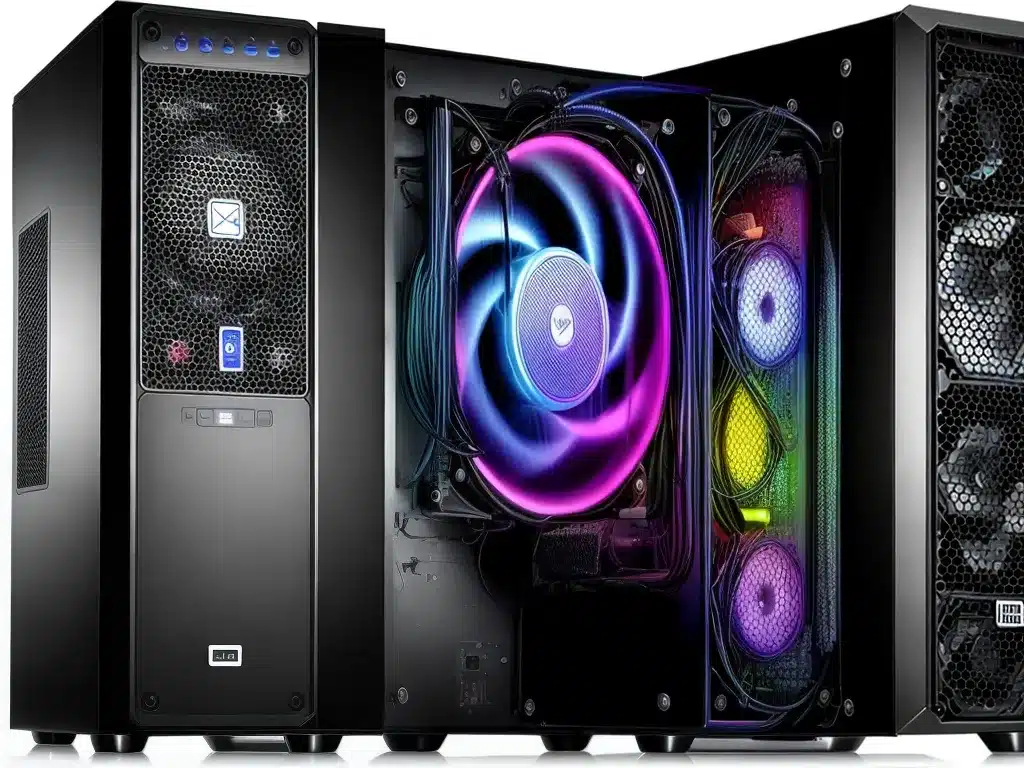
Monitor Temperatures
High temperatures inside your computer can cause damage and decrease performance. Use software like Core Temp or HWMonitor to check your CPU and GPU temperatures.
Ideal operating temperatures are usually below 75°C for the CPU and below 85°C for the GPU under load. If temps exceed 90°C, I would take action to improve cooling.
I monitor temperatures regularly to ensure my hardware stays within safe ranges. Sudden spikes in temperature may indicate an issue like dust buildup or fan failure.
Clean Out Dust
Dust buildup inside the computer case is a common cause of increased heat and noise. I clean dust from my computer every 6 months or so.
I use compressed air to blow dust out of heatsinks, fans, vents, and filters. Compressed air allows me to remove dust without opening up the case.
For a deeper clean, I open the side panels and use cotton swabs, toothbrushes, or microfiber cloths to wipe dust away from components. I’m very gentle and avoid static discharge while cleaning internals.
Regular dust removal keeps temperatures down by allowing fans and heatsinks to dissipate heat efficiently. It also prevents overworking the fans.
Replace Thermal Paste
The thermal paste between a CPU/GPU and heatsink can dry out over time. This reduces heat transfer, causing higher temperatures.
Every 2 years, I remove the heatsink, clean off old paste with isopropyl alcohol and cotton swabs, and apply a pea-sized dot of fresh thermal paste like Arctic Silver or Thermal Grizzly.
Replacing dried-out paste can lower CPU/GPU temperatures by 10°C or more. I make sure to properly re-mount the heatsink with even pressure after replacing paste.
Upgrade Cooling Solutions
For systems that run hot, I upgrade the CPU cooler, case fans, or even the case itself to improve airflow and cooling capacity.
-
Aftermarket CPU coolers like Noctua or be quiet! beat stock coolers for noise levels and cooling. Larger heatsinks and fans dissipate more heat.
-
High CFM case fans move more air through the case. I look for fans with bearings that reduce noise. Replacing stock case fans can lower temps 5-10°C.
-
High airflow cases like those from Fractal Design, Cooler Master, or Corsair have ventilation and fan mounts to support better cooling. Swapping cases helps if the existing case has poor airflow.
Better cooling means I can run fans slower while maintaining good temps. Slower fans are much quieter, reducing noise.
Undervolt CPU/GPU
Undervolting is safely reducing the CPU/GPU voltage to lower power use and heat output. I use XTU for Intel CPUs or Radeon Software for AMD GPU undervolting.
After stress testing to ensure stability, undervolting typically drops temperatures by 5-10°C with no performance loss. This also allows fans to run slower.
Carefully tuning voltage is an easy way to optimize thermals and acoustics. Just be sure to stress test properly after changes.
Limit Dust Intake
To reduce future dust buildup, I make sure my computer case has dust filters installed over intakes. I also limit carpet contact and clean around the PC regularly.
For extra protection, I’ve switched cases to ones with more dust filtering like the Fractal Design Meshify or the be quiet! Pure Base 500DX.
Restricting dust intake is crucial for maintaining good cooling over time. Less dust also means I don’t have to clean as often.
By following these best practices, I’ve been able to keep my computers running cool and quiet. Proper monitoring, maintenance, and upgrades go a long way towards optimal thermals and acoustics. My system performs great without loud fan noise!












